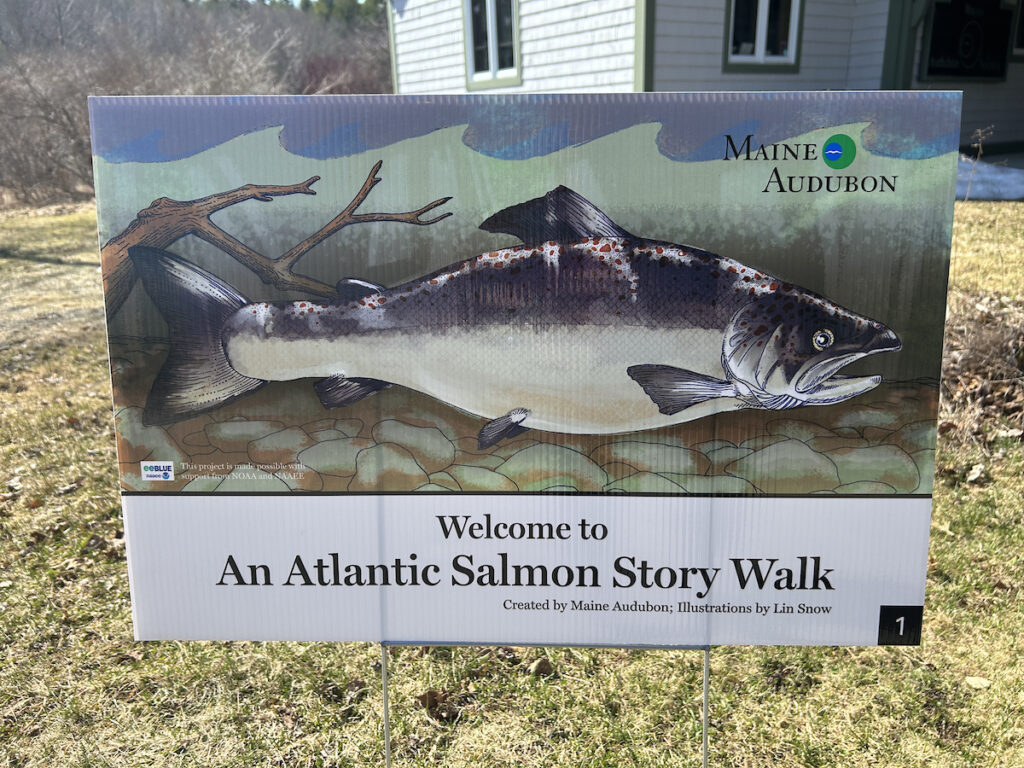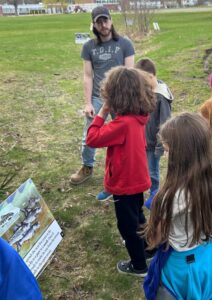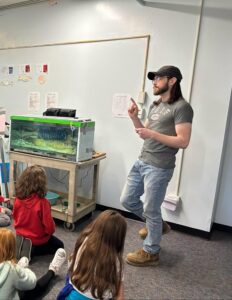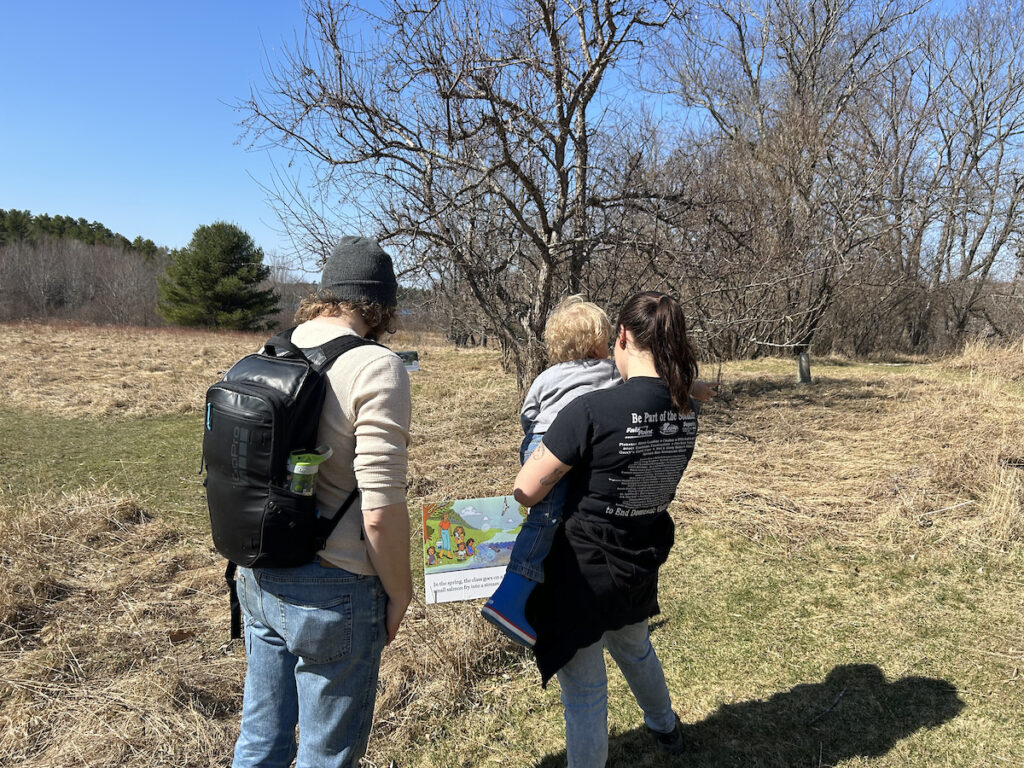
 Through recent outdoor learning and hands-on activities, students at the Fairmount School in Bangor are deepening their understanding of watersheds thanks to Maine Audubon’s “River in my Backyard” after-school program.
Through recent outdoor learning and hands-on activities, students at the Fairmount School in Bangor are deepening their understanding of watersheds thanks to Maine Audubon’s “River in my Backyard” after-school program.
The school was recently presented with their very own salmon story “walk,” 12 boards placed along a trail, each one depicting a page of “An Atlantic Salmon Story,” an original story that shows a classroom of students raising salmon from eggs to fry and releasing the fry into the river. The story captures the life cycle of the Atlantic Salmon, its migratory journey, and the importance of protecting this endangered species. All year, as part of the River in my Backyard curriculum, students have explored how issues like healthy river ecosystems impact wildlife, including the Atlantic Salmon, and what they can do to be part of the solution.
 Cody Dillingham, a graduate research assistant at University of Maine’s Department of Wildlife, Fisheries, and Conservation Biology, joined the students on their walk and then presented some additional information and talked about the challenges migratory fish face in Maine’s river systems.
Cody Dillingham, a graduate research assistant at University of Maine’s Department of Wildlife, Fisheries, and Conservation Biology, joined the students on their walk and then presented some additional information and talked about the challenges migratory fish face in Maine’s river systems.
As an example of how healthy rivers are important for aquatic life, Dillingham led the students in an activity related to fish eyes. A fish’s eyes are specially designed to find their prey, and may see some colors better than others. In especially polluted or dirty water, a fish may not be able to see at all, may not be able to tell the true color of objects, and may have a hard time finding food.
Students tried out different colored goggles to see if they could sort objects by color to select food quickly and successfully. They discussed what it could mean for a fish to eat the wrong “food” like wood or plastic. If a fish fills its stomach with wood or plastic, it hasn’t gotten any nutrition so it can’t grow. These activities help students understand the need for clean and healthy water and its importance for all aquatic life to thrive.
The story is also installed at the Fields Pond Audubon Center in Holden, and visitors have been enjoying reading about salmon there as well!
A portion of this programming was funded by a grant from the North American Association for Environmental Education. Staff at Maine Audubon’s Fields Pond Audubon Center in Holden work with Bangor students in three afterschool enrichment sites, partnering with Maine Discovery Museum and Bangor Schools’ 21st Century Community Learning Center programs to support fieldwork, visits with experts, and opportunities for students to showcase their work .
“An Atlantic Salmon Story” has art created by Maine artist Lin Snow. The StoryWalk® Project was created by Anne Ferguson of Montpelier, VT, and developed in collaboration with the Kellogg-Hubbard Library.

